#[ramalina menziesii]
Explore tagged Tumblr posts
Text

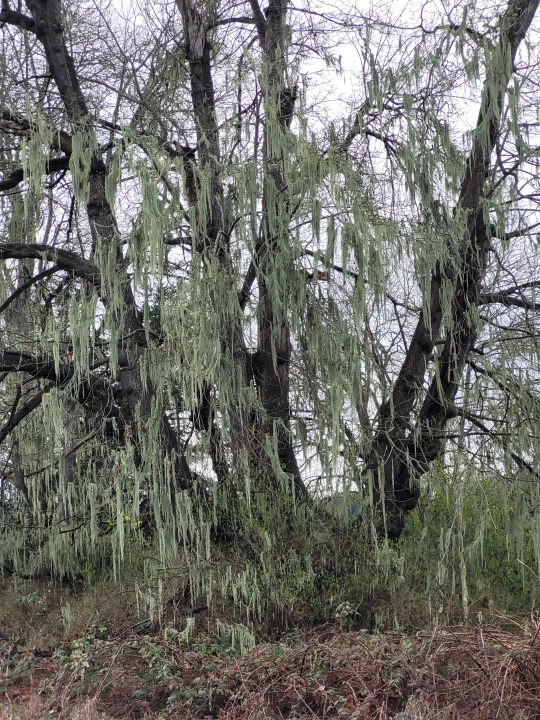
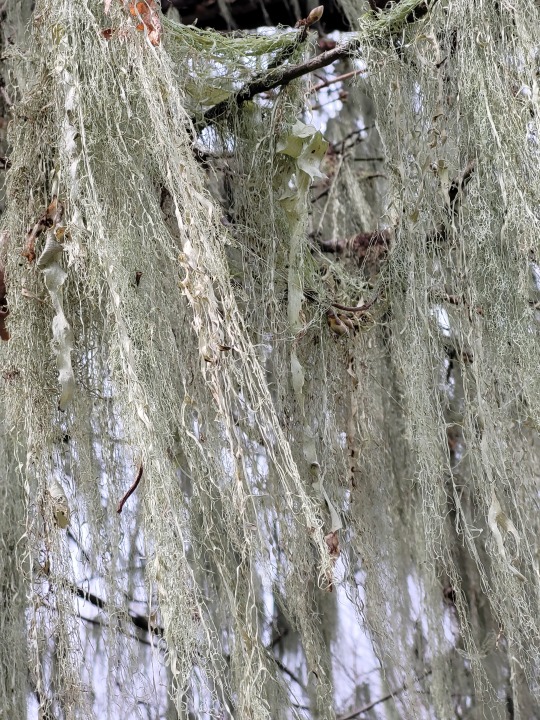
Ramalina menziesii (Lace Lichen)
South-eastern Vancouver Island, BC, Canada. March 10, 2024
One of the few lichens I really wanted to see on this trip, because its distribution is strictly restricted to the western coast of North America. I'm not sure when (or if) I'll be here again, so my priority is these Pacific coast lichens.
63 notes
·
View notes
Text
FOTD #102 : lace lichen! (ramalina menziesii)
lace lichen (also fishnet lichen) is a fruticose epiphytic lichen in the family ramalinaceae. it is found across north america & plays multiple important ecological roles :-) the indigenous kawaiisu people of california reportedly used it for its magical properties*.
the big question : can i bite it?? nah - it is mostly inedible for humans, but it is an important food source for deer in the coast range of california !!
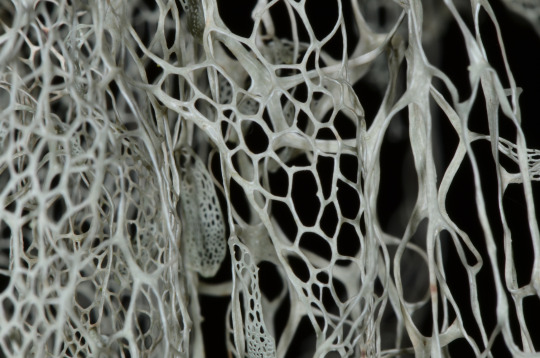
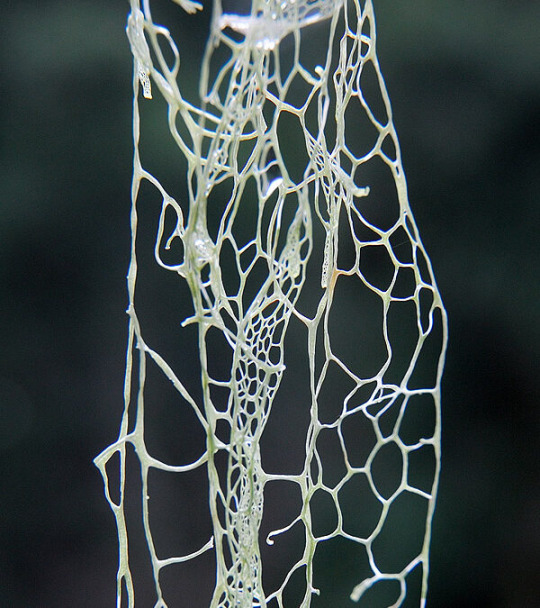
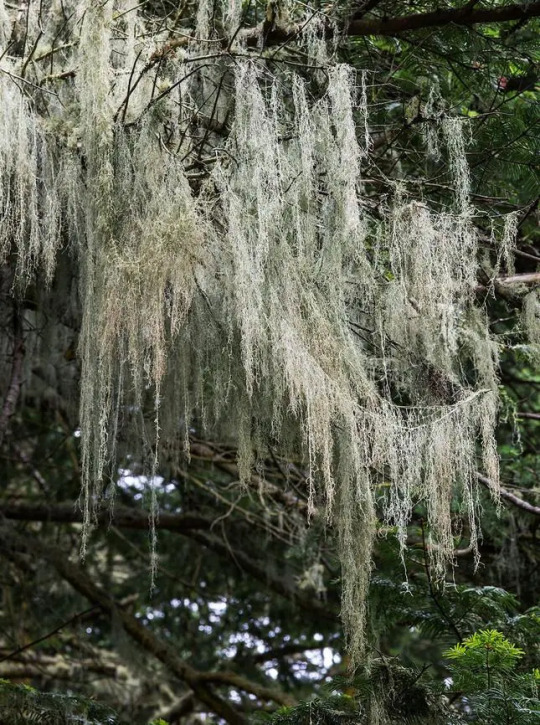
r. menziesii description :
"this lichen grows up to a meter long, hanging from bark & twigs in a distinctive net-like or lace-like pattern. it is white to light green."
[images : source, source & source] [fungus description : source]
*so, this was one of the first recorded instances of people using this lichen !! apparently, they would place it in water to bring rain, & place it in fire to repel thunder or lightning :-) the kashaya pomo people of northern california would also use it, but as a "sanitary material" (which i assume means like toilet paper?).
#• fungus of the day !! •#[ramalina menziesii]#: lace lichen :#: fishnet lichen :#102#||#fungi#mycology#nature#earth#cottagecore#fungus#forestcore#foraging#fotd#fungus of the day#ramalina menziesii#lace lichen#fishnet lichen#lichen
59 notes
·
View notes
Text



At the stabilized dunes in Deception Pass State Park
2 notes
·
View notes
Text
LOCAL WALKS: Pacific Northwest Mood
LOCAL WALKS: Pacific Northwest Mood
The darkening time – after months of drought the rain arrives, awakening licorice fern tendrils, greening up the ragged moss blankets that wrap around rocks where mushrooms smile. * Shadows thicken, gloom pervades the forest, opaque clouds loom over the sea. Threads of lace lichen soften, gracefully fluttering in the cool air by the bay where I watch the last bees fret the…

View On WordPress
#Arbutus menziesii#Deception Pass State Park#Lace lichen#Licorice fern#Madrone#Polypodium glycyrrhiza#Ramalina menziesii
0 notes
Photo

Ramalina menziesii
Lace Lichen
Aside from being weird and beautiful, this species is the first lichen to ever be designated as a “state lichen”. The state is California, for the record, to no one’s surprise. Thanks, California Lichen Society.
(via)
#Ramalina menziesii#Ramalina#Lace Lichen#Lichen#state lichen#foliose#California#California Lichen Society#lace#delicate
48 notes
·
View notes
Text
!! It looks like Ramalina menziesii, but white!
a



Ingaderia pulcherrima
Just … why? Why does I. pulcherrima have to be this extra? This gorgeous? What purpose does it serve besides tempting me to make it my friend? This fruticose lichen has a soft, fragile, lacey thallus hanging in holey curtains from a singular holdfast. It is pale creamy gray to grayish brown in color, and rough in texture. It very rarely produces apothecia. I. pulcherrima grows vertically on rock, twigs, and cactus spines near the coasts of Chile. And it looks like a living doily just because it can.
images: source
info: source | source
465 notes
·
View notes
Text
sometimes i look up my favorite lichens on tumblr just to see if theres anything in the tags😌
1 note
·
View note
Text

Ramalina menziesii
Lichens of North America
251 notes
·
View notes
Photo










Finally found this lichen in one of the barrens in Kentucky, I’ve found it multiple times growing on landscape trees and producing ascoma to the point where they are studded, never have found a decent sized one outside of cultivated trees from down south that end up in yards in Ohio.
Here is one laying among the debris in one of the barren openings in Northern Kentucky, Ramalina americana, in-situ, Reticulate thallus grooves and all!
This species is one of the single coolest looking lichens on the planet, attached at one small hold fast point and capable of being very large. With that said, Ramalina spp. (sinew lichens) and Lobaria spp. (lobe worts) both known for reticulate thallus growth and are both known for being increadible to see, ide love to meet them all one day. Do your self a favor, google Ramalina menziesii.
Shots are from my scope at home pencil tip for scale. Ascoma in the form of apothecia are produced in mass, the lip tends to have less photobiont association and because of this is somewhat white to translucent tinted.
Reticulate growth pattern causes groove like thallus formations.
Many ascoma seem to form primarily at the tips prior to the rest of the thallus. In the middle row to the right we can see these tip ascoma forming their shape. this is a bit after true primordia.
bottom left shows side profile for scale on newly formed ascoma. Bottom right and below text show you the density of meiotic sacs/ asci. Usually paraphysen are often 1/3 the size of the imbedded asci, so each dimple you see can be thought of as a section of the tip of 1 paraphysen.
Paraphysen are erect sterile hyphae, in many cases they are tube like or filament like fungal bodies with little space in-between each wall. These act as support structures, occurring among the ascoma of ascomycota including these lichens.

29 notes
·
View notes
Photo









first row: Psora decipiens, a very cute pastel squamulose lad with a pink center and white isidia around the edges. in my opinion these are best viewed under a dissecting microscope, where you can see all the details of the fading between the pink and white sections.
second row, left: Ramalina menziesii, the lace lichen and the state lichen of california. very cool lad who grows in HUGE tufts hanging off branches.
second row, right: Lobaria pulmonaria, aka ‘lungwort’, known for covering WHOLE ASS TREES and unsurprisingly one of the fastest growing lichens.
third row, left: an example of the large lichen genus Cladonia; Cladonia fimbriata, specifically. this genus is responsible for most of the lichens I see people getting confused about in general, and i’ve found this is because theyre just...kind of hard to make sense of if you’re unacquainted, especially if you’re like, wandering in the woods and encounter a group of Surprise Cup Lads (LICHEN PRO TIP: when you see a lichen making little cups on stalks, something from Cladonia is a solid guess in terms of ID). the genus is huge and incredibly diverse, and they all come in different shapes, sizes, colors, and growth forms, which makes them even more endlessly entertaining. when i first learned about these guys i spent a couple hours just looking through my uni’s herbarium; Cladonia, as a genus, fills half a locker of samples in the lichen section (that is...a LOT of lichens).
third row, right: Usnea cirrosa. i have never seen this species with my own eyes. i’ve seen other species of Usnea, which look comparatively normal, but i have never seen this particular one outside of the lichen textbook where i saw this exact same picture and could not handle it. this is one of those times where i just do not know what happened here in terms of evolution. apparently it lives in texas
fourth row, right: Pseudocyphellaria anthraspis (aka Lobaria anthraspis). the pic is one i took of a sample i collected in northern california, near a redwood forest. i just think shes neat
fourth row, left: Rhizocarpon lecanorinum. this one’s a smaller sample photographed by Annelie Burghause on Flickr. we use this species in class as an example of a lichen that can be identified by what color it glows under UV light; this one turns orange, which indicates rhizocarpic acid in the thallus.
there are probably a ton im forgetting bc there are a LOT i like but these are some that come to mind lmao
#credits for the pics i dont directly credit are under the respective CNALH links#plont asks#asks#lichens
496 notes
·
View notes
Text
Ebey’s Landing
On May 4th we drove out to Ebey’s Landing, a beach on the western side of Whidbey Island, looking out towards the Olympic peninsula. It was a sunny day and windy out there; about 68 degrees though it felt warmer. Our walk down the strand and then up the bluff back to where we started took roughly 3 hours, between 1 and 4 PM.
I knew that in terms of trees I was going to see the usual suspects of the pacific northwest: the grand fir and the douglas fir abounded, especially on the high bluffs. Interestingly the trees that stood on the bluffs were much shorter than they normally would be for how old and wide they were, and this I learned was due to the ever present winds that made it difficult for them to grow tall. I also saw an interesting area where there was a very dense growth of Giant Horsetails, a carpet of them thick enough to walk on, seemingly.
However I was also introduced to some species that I hadn’t seen before, like the killdeer, common loon, and the nootka rose. Other species I hadn’t encountered before were the sculpin, Ravens, and Red Winged Blackbirds.
I learned that the Puget Sound is only part of a greater body of water that encompasses the Pacific Northwest’s coastal waters called the Salish Sea. The many drumlins and kettle ponds which were laying along Ebey’s Landing were a creation and result of glaciers compacting rocks and soil and then melting.
I learned that the Red Winged Blackbird is a hypergamous species, with one male usually mating with between 8 to 10 females, and by consequence being a very competitive bird that seeks out habitats high in potential food.
Walking along the strand it was clear that the tides and the continual erosion created by wind and rain were slowly but surely softening the shape of the coastline. It seemed to slope and slide gracefully from the sides of the bluffs on down to the beach. Driftwood was piled up on the beach and the wood was smooth and sanded down. I could hear the calls of loons and gulls in the distance, and altogether with the distant Olympic mountains in view it provided a cohesive picture of the Salish Sea area.
There was definitely evidence of the various interactions between the species, mainly in a predator prey dynamic. The beetles and ants living in the sides of the sloping sandbar were preyed upon by the sparrows and killdeer, while the sculpin I saw was probably consumed by a bald eagle. I also saw a raven fighting with a group of crows for food that it was carrying in its beak. It seemed that competition for food was held mainly between the birds, at least visibly.

#1, photo of the severed half of a Common Sculpin (Cottoidea). I noticed that it was clear from the torn area that the fish had been bit in half, probably by a bird which had abadoned the sculpin’s top half on the beach after eating its fill. I could also observe that the things guts were still intact inside, which begged the question of what thing would kill the fish only to leave most of its consumable parts uneaten. Perhaps it was dropped in a dispute similar to the one I had seen between the Raven and the crows earlier?

#2, a photo of Lace Lichen (Ramalina Menziesii) adhering to a branch. A common species in Ebey’s Landing. It reminds me of Witches Hair, and the texture of it reminded me of a strange kind of synthetic texture. I was surprised by how durable and strangely abrasive it felt--reminded me of the steel wool I use to scrub pots clean.
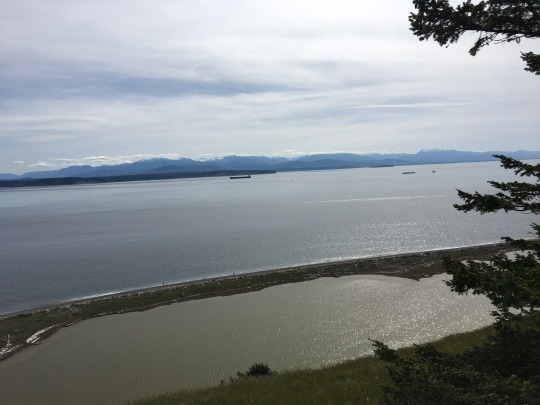
#3, Landscape image of a view of the lagoon and the olympic mountains on the other side of the Sound.
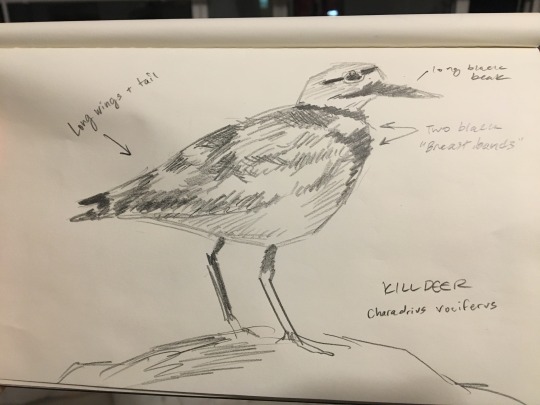
#4, a sketch of a Killdeer. I saw it perched on a rock in the lagoon. It was easily identifiable by its large head, long wings, and tendency to walk around on its legs.
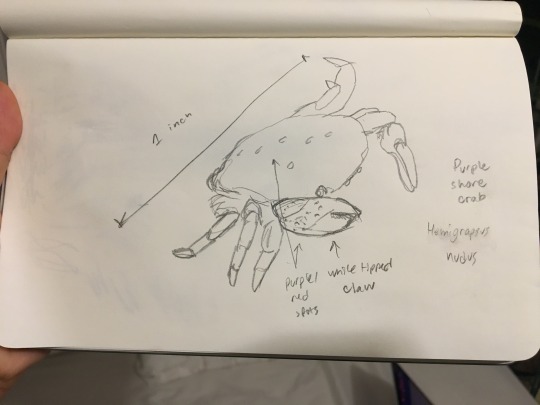
#5, a sketch of a purple shore crab. I believe that this dead crab I found was a purple shore crab (Hemigrapsus nudus), and furthermore that the crab was female, due to the large plated "apron” on its underside. Females have larger “aprons” presumably because they store their eggs in them. I wonder how it is that such small creatures are able to feed and sustain themselves without getting destroyed or constantly tossed about in the water. If there’s some aspect of a crab’s nature that keeps it rooted to the ocean floor, it doesn’t seem apparent in the crab’s weight or density, which seems quite light and non existent.
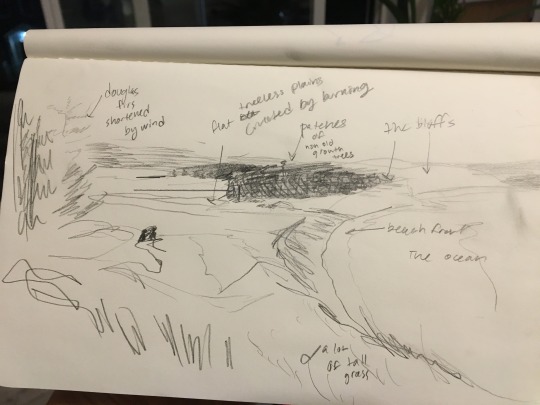
#6, a sketch of Ebey’s Landing seen from the bluff. I drew here a view from the bluff looking down both on the coast and the plains which had long ago been cleared. The undisturbed area of the forest grew tall, but stood alone in a small patch, and around me were tall grasses that seemed to have grown to maturity and were ready to “flower”.
2 notes
·
View notes
Photo

My favorite lichen (Ramalina menziesii?) - I don't understand how it can grow in this pattern and I don't want to know, mysteries are good sometimes! (at Fairfax, California)
135 notes
·
View notes
Text

1 note
·
View note
Text
JUST ONE: Lace Lichen
JUST ONE: Lace Lichen
If I’m going to include lichens in my “Just One” series about plants that open my eyes wider (and yes, lichens must be included!) then let the first lichen be this one.
*
1.
Lovely Lace lichen
who are you?
Your Latin name, Ramalina menziesii, dances
across my lips
and hovers lightly in the air,
waiting to be explained. Your
drifting, wafting, pendulous gray-green…
View On WordPress
0 notes

